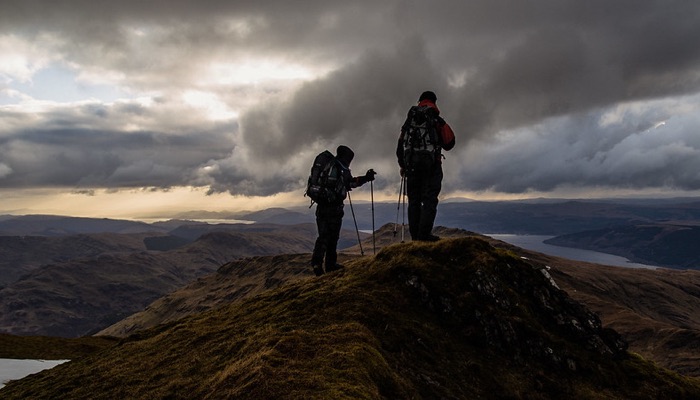If you’ve spent any amount of time shopping for survival products then you’ve come across premium materials like titanium, Dyneema, silnylon, carbon fiber, and the like. These are low-weight, high-strength materials developed for industries like racing or aircraft manufacturing that, in recent decades, have found their way out onto trails and mountain peaks as gear makers in the “ultralight” and thru-hiking communities have embraced them to shave every ounce off their pack weight.
A lot of this gear is amazing, and the ultralight backpacking community has definitely had a large, positive impact on the prepping community — weight is often the main constraint when planning for anything away from your home or car, so we’re happy to see the market getting lighter.
But as we at The Prepared have done deep dives on these materials and products for survival gear reviews, including many interviews with experts in both ultralight hiking and survival, it has become more and more clear to us that ultralight gear is not necessarily great for prepping.
Sure, in the right hands and under the right circumstances, ultralight gear can be the best choice for a given need (eg. a jacket or portable solar charger). But the super-expensive, space-age products aren’t always the best fit for your supplies — even if you can comfortably afford such things, where saving 10-20% in weight might cost you 50-200% more.
Here are a few things to keep in mind as you drool over that ultralight tent or backpack, imagining yourself living out of it for months in the wake of some catastrophe.
All gear wears out, eventually. There’s a reason your grandpa’s pocket knife blade was oddly shaped — he wore it down by using it and sharpening it. This is just the basic laws of thermodynamics. You will wear out your gear.
So, given that you’ll eventually wear out your kilobuck Trailbuster Ultralight 5000 Thingamajig, is it really wise to pay a 2-3x premium for it vs. just buying two or three copies of a slightly-heavier alternative for the same price? Or vs. putting that money into more consumables (food, hygiene, batteries, fuel, etc.)?
Two is one and one is none. That single ultralight product you saved up for may have all sorts of magical qualities, but buying three still-great-but-not-ultralight versions of the same product gives you the following survival advantages that no space age material can match:
- Redundancy, in case your ultralight product gets lost or broken.
- Trade value, in that you can offer one of your backup copies for something else you need.
- Ability to help out a partner or ally by loaning them one of your extras.
All of these are legitimate, real-world survival benefits that having more than one of something will give you, so think carefully before you forego them in favor of a single piece of high-dollar, ultralight “grail” gear.
Ultralight gear can be less forgiving, where the designers assumed a certain level of user expertise and attention to detail that you just may not have or be able to give in an emergency.
For example, a 15D silnylon tarp is an amazingly lightweight, tough, wonder of modern technology. And in the hands of a skilled backpacker it can provide many nights of shelter in the bush. But if you’re flustered, stressed, or just plain don’t know what you’re doing, you can tear it up, or burn a hole in it, or bust a seam, or detach an anchor point, remarkably quickly.
Real emergencies are unlikely to resemble outdoor adventures. Yes, people take ultralight gear on extreme outdoor adventure trips. But the person who took their pack up Everest chose to climb that mountain, and in fact they planned for it for a long time. They weren’t roused in their sleep, handed a pack, and rushed from their home to parts unknown.
There are very few realistic disaster scenarios that look like the kinds of planned, contained, all-the-risks-have-been-pre-assessed outdoor excursions that professional adventurers go on. You just don’t know what you’re going to face or what shape you’ll be in when you face it, so gear that’s designed for a market where nerds spend weeks with a spreadsheet planning every detail of a trip may not always be the best fit for a prepper.
For gear lifespan, ultralight performance is no guarantee of emergency results. Most daily-life users aren’t spending 100 nights a year in the wilderness. So when you read on some ultralight hiking forum that someone’s gear lasted “for a decade” and shows no signs of wear, you have to exercise a little skepticism about how relevant that is to prepping because that may have only been 30 total nights. In a true catastrophe, you may go a year or more without access to basic services, relying on your gear and living out of a camp or a pack.
Conclusion: use your head
We love ultralight gear, and we buy it, own it, and recommend it for all sorts of reasons. The key is to avoid getting caught up in the cool factor and think about when it makes sense to spend more money in exchange for the weight savings, while considering how durable you need that gear to be and if you’d be better off having more of a cheaper version.
For example, when planning for a bug-out scenario where you grab your bag and leave on foot, clearly saving kit weight will be helpful (even though you might not actually end up on foot when it happens). But you may need to rough it in the wilderness with whatever you have in that bag for a long time. So while optimizing for the lightest spork might be fine because it’s no big deal if it breaks, you might care more about having a shelter tarp that’s one pound heavier but can withstand all of the friction that comes from exposure to rocks, pointy bark, hail, and constant line-tension.


You are reporting the comment """ by on